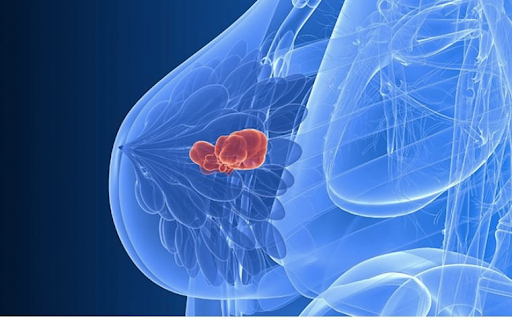Explore the comparative analysis between CanAssist Breast and Oncotype DX, two key prognostic tests for breast cancer.
Both CanAssist Breast (CAB) and Oncotype DX (ODX) are prognostic tests used in early-stage, hormone receptor-positive (HR+), and HER2-negative breast cancer to assess the risk of distant recurrence and guide treatment decisions. However, they differ in several key aspects:
Technology:
When it comes to the technological differences between CanAssist Breast (CAB) and Oncotype DX (ODX), here’s a deeper dive:
CanAssist Breast (CAB):
-
Immunohistochemistry (IHC): CAB analyzes the expression of five biomarkers (CD44, ABCC4, ABCC11, N-Cadherin, and pan-Cadherins) in tumor tissue samples. This visualization of proteins provides insights into their role in cancer progression.
-
Machine Learning (ML) Engine: CAB utilizes an AI/ML algorithm trained on a large dataset of patient data. This algorithm analyzes the IHC results alongside clinical parameters (tumor size, tumor grade, and lymph node involvement) to generate a risk score for distant recurrence within five years. The score then classifies patients into low-risk (<15.5) or high-risk (>15.5) categories for recurrence.
Oncotype DX (ODX):
-
Gene Expression Analysis: ODX examines the expression levels of 21 genes associated with cell proliferation, cell death, and other biological processes involved in cancer development. This analysis is done using a technique called real-time reverse transcription polymerase chain reaction (RT-qPCR).
-
Recurrence Score: ODX calculates a Recurrence Score based on the gene expression pattern. This score predicts the likelihood of distant recurrence and the benefit of chemotherapy within five years. Patients are categorized into three risk groups: low, intermediate, and high.
Key Differences:
-
Target: CAB focuses on protein expression (IHC), while ODX analyzes gene expression levels (RT-qPCR).
-
Algorithm: CAB employs an AI/ML algorithm to model complex interactions between biomarkers, while ODX uses a pre-determined algorithm based on gene expression and risk categories.
-
Outcome: Both tests predict the risk of recurrence, but CAB generates a binary (low/high) assessment, while ODX provides a three-tiered (low/intermediate/high) classification.
Accuracy:
Both tests show good accuracy in identifying low-risk patients who are unlikely to benefit from chemotherapy. This is crucial, as it helps avoid unnecessary treatment and its associated side effects.
Concordance:
-
Overall Concordance: Studies show varying levels of concordance between the two tests, ranging from 75% to 83%. While there might be some discordant cases, the overall agreement is satisfactory.
-
Low-Risk Concordance: The concordance is particularly high in the low-risk category, reaching ~82%-83%. This is vital, as accurately identifying low-risk patients is the primary goal of these tests.
Negative Predictive Value (NPV):
-
NPV refers to the probability of being truly disease-free when classified as low-risk by the test.
-
Both CAB and ODX demonstrate high NPV in the low-risk category, indicating their effectiveness in ruling out distant recurrence.
-
CAB slightly outperforms ODX in NPV (93.4% vs. 89.7% – 91.8%).
Cost:
The cost difference between CanAssist Breast (CAB) and Oncotype DX (ODX) is a significant factor to consider when choosing a predictive test for early-stage breast cancer. Here’s a detailed breakdown:
CanAssist Breast (CAB):
-
Cost varies: Typically ranges from INR 55,000 to INR 80,000 in India.
-
Factors affecting cost: Diagnostic center location, package deals with other tests, and any additional fees.
-
Accessibility: Significantly cheaper than ODX, making it a more accessible option in resource-limited settings.
Oncotype DX (ODX):
-
Cost: Approximately 5-6 times more expensive than CAB, ranging from INR 3,00,000 to INR 4,50,000 in India.
-
Factors affecting cost: Diagnostic center location, lab processing fees, and potential courier charges for sample transportation.
-
Cost burden: This can be a significant financial burden for many patients, especially those without health insurance coverage.
Comparison Highlights:
-
CAB offers a cost-effective alternative: Its significantly lower price makes it a viable option for patients who might otherwise forego prognostic testing due to financial constraints.
-
ODX remains the standard: Despite its higher cost, ODX is still widely used due to its longer track record and extensive validation data.
-
Cost-benefit analysis: For some patients, the additional information provided by ODX might justify the higher cost, especially if it potentially guides towards a more personalized treatment plan.
Other factors to consider:
Besides technology, accuracy, and cost, several other factors should be considered when comparing CanAssist Breast (CAB) and Oncotype DX (ODX) for early-stage breast cancer:
Availability:
-
CAB: Currently available in India and a few other countries. Expanding availability, but not yet as widely accessible as ODX.
-
ODX: Available globally, making it an option for patients in more countries.
Validation:
-
CAB: Undergoing further validation studies, especially in diverse populations. Initial studies are promising, but longer track records and more extensive data are available for ODX.
-
ODX: Longer history of use and more extensive validation data across different populations.
Clinical Context:
-
CAB: Binary risk assessment (low/high) might be sufficient for patients with straightforward clinical presentations.
-
ODX: Three-tiered risk classification (low/intermediate/high) might provide additional information for patients with more complex clinical scenarios.





